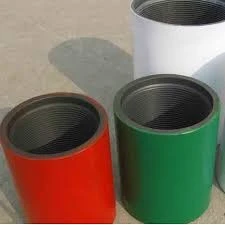- Afrikaans
- Albanian
- Amharic
- Arabic
- Armenian
- Azerbaijani
- Basque
- Belarusian
- Bengali
- Bosnian
- Bulgarian
- Catalan
- Cebuano
- Corsican
- Croatian
- Czech
- Danish
- Dutch
- English
- Esperanto
- Estonian
- Finnish
- French
- Frisian
- Galician
- Georgian
- German
- Greek
- Gujarati
- Haitian Creole
- hausa
- hawaiian
- Hebrew
- Hindi
- Miao
- Hungarian
- Icelandic
- igbo
- Indonesian
- irish
- Italian
- Japanese
- Javanese
- Kannada
- kazakh
- Khmer
- Rwandese
- Korean
- Kurdish
- Kyrgyz
- Lao
- Latin
- Latvian
- Lithuanian
- Luxembourgish
- Macedonian
- Malgashi
- Malay
- Malayalam
- Maltese
- Maori
- Marathi
- Mongolian
- Myanmar
- Nepali
- Norwegian
- Norwegian
- Occitan
- Pashto
- Persian
- Polish
- Portuguese
- Punjabi
- Romanian
- Russian
- Samoan
- Scottish Gaelic
- Serbian
- Sesotho
- Shona
- Sindhi
- Sinhala
- Slovak
- Slovenian
- Somali
- Spanish
- Sundanese
- Swahili
- Swedish
- Tagalog
- Tajik
- Tamil
- Tatar
- Telugu
- Thai
- Turkish
- Turkmen
- Ukrainian
- Urdu
- Uighur
- Uzbek
- Vietnamese
- Welsh
- Bantu
- Yiddish
- Yoruba
- Zulu
Exploring Bull Plug Oil and Gas Industry Insights and Innovations for Enhanced Performance
Understanding Bull Plug in the Oil and Gas Industry
In the realm of oil and gas exploration and production, various equipment and technologies play pivotal roles in ensuring operational efficiency and safety. Among these, the bull plug is a key component, often overlooked but essential in various applications—from well drilling to pipeline operations. This article delves into the importance, types, and applications of bull plugs in the oil and gas sector.
What is a Bull Plug?
A bull plug is a type of sealing or closure device utilized primarily to block the end of pipes or well casings temporarily. Its design allows for easy installation and removal, making it a valuable tool during different stages of oil and gas operations. Bull plugs can vary in size and materials, depending on the specific requirements of the operation, and they are often made from metals, such as steel or alloys designed to withstand high pressures and corrosive environments.
Importance of Bull Plugs
The functionality of bull plugs is critical in several operations within the oil and gas industry. Firstly, they are used to seal wells when drilling operations are paused. This seal helps maintain the pressure within the well, preventing fluid intrusion during instances of temporary suspension. This not only ensures the integrity of the wellbore but also minimizes the risk of environmental contamination.
Secondly, bull plugs serve as safety devices. During maintenance activities, they prevent the accidental release of hydrocarbons from pipes or pressure vessels. This aspect is vital for safeguarding the personnel involved and the surrounding environment, aligning with the industry’s commitment to safety protocols.
Types of Bull Plugs
Bull plugs come in various forms to cater to different operational needs
1. Standard Bull Plugs These are used for general applications and are typically designed for a range of pressure ratings.
2. High-Pressure Bull Plugs Specifically designed to withstand extreme pressure conditions, these plugs are crucial in deep-water drilling and high-pressure well environments.
bull plug oil and gas

4. Custom Bull Plugs Some operations require tailored solutions. Custom bull plugs can be designed to fit specific dimensions or to meet unique operational challenges.
Applications of Bull Plugs
The applications of bull plugs in the oil and gas industry are extensive
- Drilling Operations During drilling halts, bull plugs are employed to seal the well and control the pressure, thereby ensuring the safety and stability of the drilling operation.
- Maintenance Activities During the maintenance of pipelines and infrastructure, bull plugs help isolate sections for safety, ensuring the work can proceed without leaks or spills.
- Transportation In pipeline transport, bull plugs are utilized during temporary shutdowns to prevent the backflow of substances and to maintain system integrity.
- Testing and Inspection Bull plugs are also essential during pressure testing and inspections to ensure that the systems are functioning correctly without any leaks.
Conclusion
In conclusion, bull plugs, though often unnoticed, are indispensable in the oil and gas industry. Their role in maintaining safety, facilitating maintenance, and ensuring operational efficiency cannot be overstated. As the industry evolves, the design and technology behind bull plugs will likely advance, further enhancing their performance and reliability in various applications. Understanding and properly utilizing bull plugs contributes to safer and more efficient oil and gas operations, affirming their importance in this critical industry.
-
Tubing Pup Joints: Essential Components for Oil and Gas OperationsNewsJul.10,2025
-
Pup Joints: Essential Components for Reliable Drilling OperationsNewsJul.10,2025
-
Pipe Couplings: Connecting Your World EfficientlyNewsJul.10,2025
-
Mastering Oilfield Operations with Quality Tubing and CasingNewsJul.10,2025
-
High-Quality Casing Couplings for Every NeedNewsJul.10,2025
-
Boost Your Drilling Efficiency with Premium Crossover Tools & Seating NipplesNewsJul.10,2025







